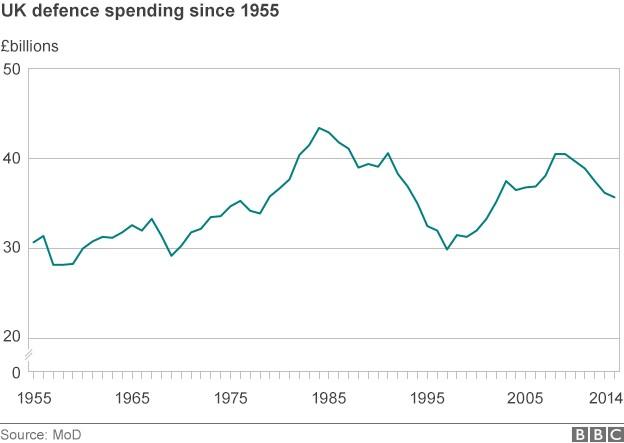Reality Check: What would 2% defence target cost?
- Published

The North Atlantic Treaty Organization (Nato) has a non-binding target for members to spend 2% of their economic output (GDP) on defence.
Member states agreed the target in 2006 in order to address the increasing gap in defence spending between the US and European members.
There is no penalty if a country fails to meet the target, and indeed most do not. Although the UK has been meeting the commitment so far, the government's plan for 2015-16 is expected to leave the country falling just shy of the threshold, according to the House of Commons Library, external.
UKIP's manifesto, external, published yesterday, pledged to keep spending 2% of GDP, which the Conservatives, Labour and the Liberal Democrats have declined to do. But how much would this cost?
Military think tank the Royal United Services Institute (Rusi) looked at what would happen if the UK met NATO's 2% target through to 2020, in a report, external published last September.
It estimated: "Over the next five years (2016-17 to 2020-21), it would require an additional £25bn to be allocated to defence on top of the amount the MoD is now assuming for planning purposes.
"If the 2% commitment was further extended, through to 2025-26, it would cost an additional £74bn."
Of course, those figures depend on the level of growth in the economy.

Election 2015 - Reality Check

What's the truth behind the politicians' claims on the campaign trail? Our experts investigate the facts, and wider stories, behind the soundbites.
Read latest updates or follow us on Twitter @BBCRealityCheck, external
